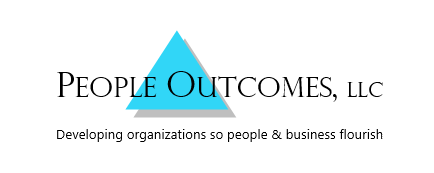The Humans Are Coming! 4 Ways to Improve Employee Relations in the COVID-19 Era
Now that the COVID-19 pandemic has integrated into our daily lives, more businesses are opening. That means that living, breathing humans will be flooding the workplace after weeks of working from home.
Is this exciting? Liberating? Terrifying? Painful? Back to the grind?
Yes…all the above. You see, this is an unprecedented event. With it comes unprecedented feelings, actions, and concerns that employees will bring back to work with them. Organization leaders: Use this opportunity to strategically plan for re-engagement of your workforce.
Re-Engage Your Workforce Through Improved Employee Relations
Improving employee relations in your organization is more critical today than ever. Fortunately, this effort brings many positive outcomes. What company wouldn’t want high-quality leaders, engaged employees, and effective recruitment and retainment? These bring value to any organization and drive financial performance.
Employee relations is the relationship between an organization and its employees. It’s the human element of your business. Employees who have a positive relationship with the organization are more likely to support its mission and vision. They will engage to perform their best work if they experience personal benefits.
Below are four strategies to improve employee relations in your organization to optimize business results.
1. Inspire Employees through Leadership Development
It’s important to ensure leaders aren’t making employees miserable… especially now. Do you have leaders in place who treat employees with respect and empathy? Do they nurture the growth of their employees? Or are your leaders more concerned about their own self-preservation and next promotion?
It can be easy to overlook a leader’s lack of people skills if he/she is competent in meeting performance metrics. Over time, poor leadership that goes unaddressed will lead to poor business results. A bad leader will drive higher turnover, lower employee engagement, and increased costs.
“Leaders eat last.” – Simon Sinek
How can you be sure your leaders are inspiring rather than demoralizing employees? Take an honest inventory of your leaders – 360 degree feedback reviews can be a valuable tool. Or, observe and reflect on the interactions between your managers and employees.
Do employees speak up during meetings? Employees who fear repercussions may avoid taking risks, healthy conflict, and growing in their roles. Your leaders should promote a psychologically safe work environment by encouraging employee input. Opposing viewpoints provide diversity of thought and richer discussion. Leaders need to prove that all ideas are valuable.[1]
Employee feedback highlights where your leaders need more development of their people skills. If a leader is unwilling to work on development, it may be time to find a replacement. Ensure your leaders have a firm grasp of their role in supporting employee relations.
Stressful times like these can bring out the best and/or worst in everyone, including leaders. Equip your leaders with soft skills like empathy, compassion, and servant leadership so that they elevate the team’s performance.
2. Excite Employees with your Mission Statement
To further improve employee relations, ensure your mission and vision resonate with employees. You want employees to express passion for what the company stands for. You want them to be excited about where the company is headed and all you have done to support them in the journey.
Your mission statement should describe your company’s purpose and reason for existence. Your vision statement is the ideal state that your company wishes to achieve.[2] It serves as guideposts that your employees aim their outputs toward.
Employees can embrace the mission and vision only if they are familiar with them and if they see you walking the talk. Communicate the mission and vision frequently and effectively with employees. Then, assess whether everyone, employees and leaders, are acting in alignment with them.
Have employees take part in creating or fine-tuning the mission and vision to foster buy in. This capitalizes on diversity, leveraging the thought leadership from the multitude. Employees will feel attached to the mission and vision and align their work to them.
3. Leverage Employee Feedback to Drive Improvements
COVID-19 has brought a paradigm shift in the way we work. Working from home, employees have experienced changes in the way work is conducted. As a result, employees will return to the workplace with ideas for improvements.
Do employees know that the organization values their feedback and ideas?
Encourage employees to share ideas and provide honest feedback. Employee feedback creates a path for continuous improvement. Implementing sound employee suggestions is a known catalyst for improved employee relations.
Speaking openly about issues requires a level of vulnerability by the employee. Creating a safe environment and valuing employee feedback will deepen the trust employees have for the organization.
Employees have a unique perspective of the problems that they are facing. Problems that you may not be aware of. Problems that may prevent them from performing their work to your satisfaction. Ask employees to tell you about the issues that are making their tasks more difficult to perform. Encourage them to suggest solutions and to help implement them.
Include employees throughout the entire process of implementing changes in your organization. This gives employees a sense of ownership in the change. They become change agents who encourage their peers to embrace the changes as well.[3]
Ensure that your organization values diversity and inclusion. Boost diversity by employing people with different qualities, experiences, and work styles. Inclusion will be felt when your employees know that you welcome their unique perspectives. Diversity brings the potential for greater innovation. Inclusion encourages employees to share their innovative ideas.[4]
4. Entice Employees with Benefits that Matter
Benefits today are likely to look very different from before COVID-19 (or, as I call it, “BC-19”). Hand sanitizer, face coverings, and more Zoom meetings may become expected by employees. Less seating in conference rooms and touchless features controlled by smartphones may be the new norm.[5]
Being open minded and flexible to expanding the benefits you offer employees is more important than ever. According to one study, sixty percent of employees rated benefits as a very important contributor to job satisfaction.[6]
We all know that recruitment and retainment come at a high cost for companies which includes a competitive benefits package for employees. And, those costs are offset by the value brought through the work of employees and increased retention. You strengthen employee relations by providing quality benefits that employees desire.
For improved employee relations, don’t simply offer the bare minimum benefits. Consider the demographic of your organization and the benefits that are important to your employees in their stages of life. Then, design a benefits package that meets the needs of the majority of your workforce.[6]
Be sure to think outside the box, beyond the standard medical, dental, and vision benefits. Some benefits that are increasing in popularity include:
- standing desks
- onsite lactation rooms
- telecommuting
- flexible and affordable cafeteria plans
- student loan repayment assistance.
Other benefits are declining in popularity, such as:
- health fairs
- on-site health screenings
- short-term disability coverage
- domestic partner benefits.[6]
We are in a unique time in the history of work. COVID-19 has been a game-changer, leveraging strengths and exposing weaknesses of organizations and leaders. Improving the employee relations in your organization is more than a noble gesture. It’s a strategic imperative that necessitates focus, effort, and commitment. With a keen focus on the human element of your business, you will have employees who are loyal to the organization and passionate about its success.
To learn more about how to put these practices into place, contact Jeanne at People Outcomes, or sign up to be notified when new and helpful business content is posted.
References:
- https://hbr.org/2019/09/8-things-leaders-do-that-make-employees-quit
- https://www.shrm.org/resourcesandtools/tools-and-samples/hr-qa/pages/isthereadifferencebetweenacompany%E2%80%99smission,visionandvaluestatements.aspx
- http://bok.ahima.org/doc?oid=302734#.Xp8Dv9NKg-e
- https://www.shrm.org/resourcesandtools/tools-and-samples/toolkits/pages/introdiversity.aspx
- https://www.shrm.org/ResourcesAndTools/hr-topics/employee-relations/Pages/Workspaces-Evolve-to-Allow-Physical-Distancing.aspx
- https://www.shrm.org/resourcesandtools/hr-topics/benefits/pages/employers-boost-benefits-to-win-and-keep-talent.aspx

